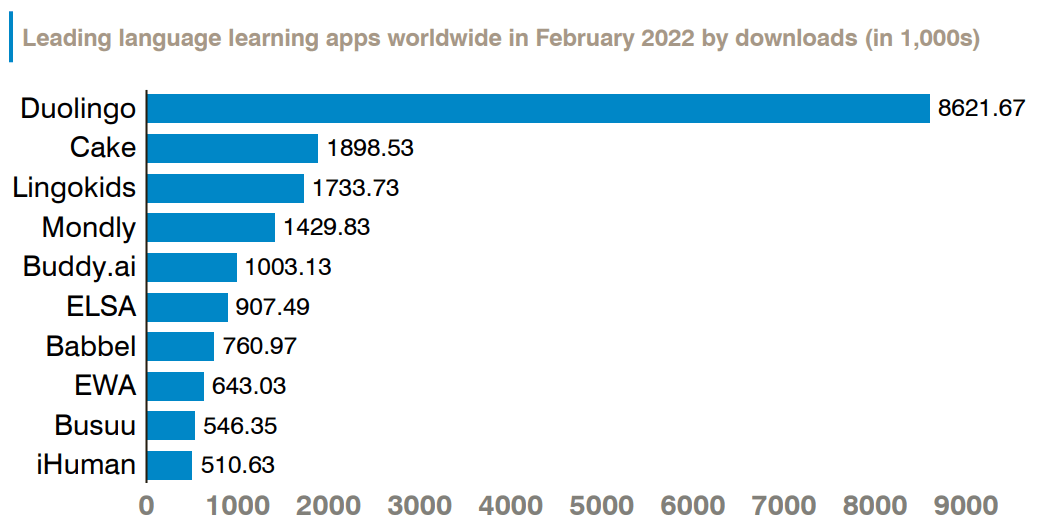Gamification as a concept is not new, but it is only within the last 15 years that it has gained recognition as a driving force that affects almost every aspect of our lives. GAM Investments’ David Goodman explores how gamification is used across industries, why it works and what the future might look like.
25 May 2022
Click here to view the Disruptive Strategist newsletter in full.
From boy scouts who obtained real badges and rank back in the early 1900s to school children earning gold stars or executives collecting frequent flyer points, incentivisation and rewarding performance has always been with us. In its simplest terms, gamification incorporates game-style incentives into non-game activities. It taps into the human need for rewards and pleasure, infusing gaming aspects into a multitude of scenarios, often with benefits to both the supplier and the end user.
Today, thanks to digitisation and ubiquitous mobile devices, the gamification influence can be found everywhere – from businesses using it to create brand loyalty or boost staff performance, to educationalists looking to improve student engagement; from the fitness industry seeking to encourage people to exercise, to the US army using it to recruit. Game mechanics is about applying a game layer on top of the real world and it is literally all around us, incorporating game design elements and game mechanics into existing experiences and platforms to drive user engagement, participation, interaction and productivity.

Gamification – why it works
By incorporating game-style incentives into non-game activities, gamification leverages the fact that a good number of people have an innate enjoyment for competition, achievement, collaboration and charity. Indeed, many of the tools used by game designers have been adopted, including badges, leader boards and ‘levels.’ By offering fun and rewards following performance-based activity, gamification can make aspects of the daily routine more enjoyable.
And fun is at the heart of why we believe gamification works.
A classic example of harnessing gamification to motivate people was the ‘Piano Stairs’ case study, part of a viral marketing campaign called The Fun Theory created by Volkswagen Sweden, that took place at Odenplan subway station in Stockholm, Sweden in 2009. The aim was simply to get people to burn more calories by taking the stairs instead of the escalator – so tactile piano keys were placed on the stairs which allowed people to create music as they walked. By making the experience more fun, the result was a 66% increase in people taking the stairs.

Gamification – how is it used?
Big business
Businesses have long used gamification techniques such as rewarding users for ‘achievements’ and providing points for use in the real world to great effect; frequent flyer programmes and loyalty shopper points have proved a highly successful tactic in achieving customer loyalty and are easily measured.
A great example of loyalty points in action is Starbucks’ Rewards app – thanks to digitisation the company has taken the basic idea and moved it to another level, achieving one of the most successful reward programmes of all time. Replacing the traditional paper cards, the app works on a completion system, with customers earning points towards bigger prizes whenever they make purchases. In Q1 2022 the company reported Rewards growing at 21% to a record 26.4 million 90-day active members – both Starbucks and its customers clearly like the app.
It’s not just about the money
Encouraging consumers to spend is only one aspect of gamification as an engagement tool - it is widely used to incentivise too, for example:
In the workplace…
In a work environment, gamification can be used to increase productivity by tracking performance, setting goals, encouraging friendly competition and improving the atmosphere - with employees rewarded for giving their best effort.
Keeping fit…
Gamification has been widely adopted by the fitness industry to encourage people to exercise more. One of the best and earliest examples is the Fitbit smartwatch, where users can track their exercise, undertake daily challenges, compete with friends and are rewarded with badges for milestones achieved. Largely successful, Fitbit’s gaming aspects have moved on, with provision of a health metrics dashboard, advanced sleep score analysis and wellness reports on latest health trends.
Learning by playing…
Applying games mechanics has brought multiple benefits for educational purposes too. For example, the language app Duolingo makes learning easier and more fun by providing language challenges for users to play, with points given for practice and results that can be shared with friends.
The stats speak for themselves. “In February 2022, Duolingo was the most popular language learning app worldwide based on monthly downloads, with more than 8.6 million users downloading the app to their mobile devices during the month. Language learning apps focusing on English as a foreign or second language were also popular, with Cake amassing roughly 1.9 million downloads, and children-specific app Lingokids ranking third worldwide.” (Statista - L. Ceci, 22 March, 2022)

Speed Camera Lottery
Over in Stockholm, they have even gamified speeding. A speed camera lottery was devised in 2011, also as part of The Fun Theory marketing campaign, to get people to obey the speed limit for fun, with the speed camera doing two things: 1) It photographed speeders and gave them a fine, with the money going into the lottery pot. 2) Those who obeyed the law had their photo taken and this was entered into a lottery to “win” a share of the pot. The average speed before the experiment was 32km/h, while during the experiment it was 25km/h – a reduction of 22%.

But gamification is not always appropriate…
The trading app, Robinhood, has gamified investing by making the investment experience akin to playing video games. Digital Confetti (now removed) would drop across the screen every time a trade was made, with the consequential hit of dopamine encouraging investors to engage with the app and trade more.
While making investing more fun seems like a good idea at first glance, in practice manipulating investor behaviour has come under scrutiny by the regulators. In August 2021 the US Securities and Exchange Commission issued a formal request to the public on investing gamification and “digital engagement practices”.
Going forward - by the numbers
The expectation is that the world will continue to see increasing demand for gamified systems, with the global gamification market projected to grow from USD 9.1 billion in 2020 to USD 30.7 billion by 2025, at a compound annual growth rate (CAGR) of 27.4%. (https://www.growthengineering.co.uk/19-gamification-trends-for-2022-2025-top-stats-facts-examples/)

The big players
North America currently accounts for the largest share of the global gamification market and this is predicted to continue for the next five years – driven by the region’s dominant number of mobile internet users, with 90% of residents owning a smartphone.
In Europe, gamification is also expected to develop significantly within the next five years, with growth supported by local governments and key stakeholders - for example in the UK and France, policymakers are set to host more gamification conferences and events. Not surprisingly, while North America and Europe will remain the largest players for some time to come, other regions are playing catching up.
Millennials will be key
Critical to gamification’s success going forward is how companies interact with millennials. Having grown up in an era of technology, they expect high levels of engagement from brands, products and companies. They take for granted that experiences will be tailored for them, but more than that, they also want to be part of something bigger, something that connects with others and has a purpose, in our view.
On a practical level, gamification can be integrated with e-commerce CRMs and websites and the data it produces is substantial, including valuable analysis. With the capability to provide data on what is working – and more critically, what is not – most organisations would likely welcome this kind of insight into their business and the step up it provides for future benefits.
It is hard to predict the end game, but as digitisation accelerates, gamification, in our view, is likely to be something all industries will be looking at closely to increase both efficiencies and productivity.
GAM is an independent, global provider of asset management services operating in three principal fields: investment management, wealth management and third-party fund management services. Across all areas of our business we are committed to the pursuit of highly differentiated strategies, having long recognised that results beyond the ordinary are best achieved by thinking beyond the obvious.
Important legal informationThe information in this document is given for information purposes only and does not qualify as investment advice. Opinions and assessments contained in this document may change and reflect the point of view of GAM in the current economic environment. No liability shall be accepted for the accuracy and completeness of the information. There is no guarantee that forecasts will be achieved. The mentioned financial instruments are provided for illustrative purposes only and shall not be considered as a direct offering, investment recommendation or investment advice. Assets and allocations are subject to change. Past performance is no indicator for the current or future development.
